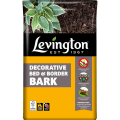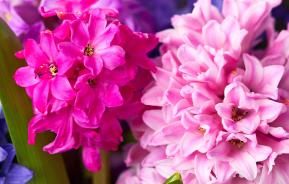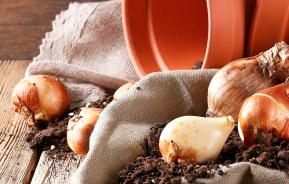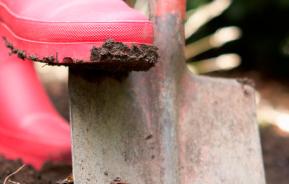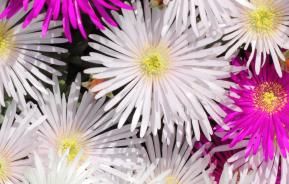Every garden needs a few bulbs. They’re among the easiest plants to grow and some of the most beautiful. From spring bulbs that give us our first flowers after winter to spectacular summer-flowering gladioli and elegant autumn crocuses there are bulbs for every garden and every season.
What is a bulb?
A bulb is essentially a plant’s food storage unit. The plant uses the stored food in the bulb to produce leaves and flowers. The leaves then replenish the food store through photosynthesis, ready for the following year. During winter months the bulbs grow and develop their root systems ready for the next season.
Where to plant bulbs
Most bulbs like sunshine and a well-drained soil, but if your garden is shady and damp, there are still bulbs for you to grow. Snowdrops, fritillaries and bluebells are woodland plants, and do best in a humus-rich soil, with sunlight in early spring while the trees are bare and light shade the rest of the year.

When to plant bulbs
Spring-flowering bulbs are planted in autumn from September onwards, although you can still plant bulbs in December provided the ground isn’t frozen or waterlogged. Tulip bulbs are best planted from November onwards.
Some hardy summer-flowering bulbs such as Alliums and Crocosmia can be planted in autumn, but frost-tender summer-flowering bulbs like Gladioli and Lilies should be planted outside in late spring after the risk of frost has past. They can also be planted in pots indoors in mid-spring and moved outside when the weather warms up.
Autumn-flowering bulbs are planted in late summer.
Types of bulbs to plant in autumn
- Winter aconites
- Snowdrops
- Crocus
- Early irises (Iris reticulata)
- Daffodils
- Fritillaries
- Tulips
- Bluebells
- Crocosmia
- Alliums
Types of bulbs to plant in late spring
- Gladioli
- Agapanthus
- Lilies
Types of bulbs to plant in late summer
- Nerines
- Autumn crocus (Crocus speciosus)
- Colchicums
How to plant bulbs
Planting bulbs is very straightforward. Here’s how it’s done:
- Dig a hole twice the depth of the bulb. If you are planting a lot of bulbs you may find it easier to use a bulb planter, a cylindrical digging tool that removes a neat plug of soil creating a hole ready for you to drop in your bulb. It works best on slightly damp soil that sticks together.
- Most bulbs prefer a well-drained soil. If you are planting in heavy soil add a handful of grit to the hole before dropping in the bulb. If your soil is very wet and heavy then consider planting bulbs in pots rather than in the ground.
- Plant the bulb with its tip pointing upwards and roots pointing down. This may seem obvious but it’s not always easy to tell which end of a bulb is which. If you can’t tell the tip from the roots then plant the bulb on its side and it will find its own way.
- Fill in the hole and compact gently.
Planting bulbs in pots
Bulbs look great in pots, bursting into bloom in early spring or making spectacular patio plants in summer. The key to growing bulbs successfully in pots is good drainage. This is especially important for spring bulbs which can rot if they sit in cold wet compost all through winter.
Top tips for planting bulbs in pots:
- Choose pots with good drainage holes.
- Place a few crocks (pieces of broken pottery) in the bottom of the pot to stop drainage holes clogging up with compost.
- Raise pots on pot feet in winter to improve drainage.
Caring for bulbs
Bulbs are perfect for low-maintenance gardens, as they need very little looking after during the year. Follow these tips for a fantastic display.
- Water bulbs in pots occasionally during their growing period, so that the compost is slightly moist but not soggy.
- For the best flowers, apply a general-purpose fertiliser to borders in early spring when the bulbs start flowering. This helps them to build up their food reserves again for next year’s flowers. If you are planning to re-use bulbs grown in pots, feed the plants fortnightly with a liquid high-potash feed (such as Tomorite tomato feed), and keep doing this for six weeks after flowering finishes.
- Once flowering has finished, cut the flower stems down to the base but leave the foliage to die back naturally. This can mean the plants look a bit untidy for a few weeks, but it’s essential to allow the leaves to restock the bulbs’ food store for next year’s flowers. Keep watering during this period.
- Once the leaves have yellowed, cut them back to ground level.
Most bulbs will grow happily where they are planted year after year, but there are occasions where you’ll need to lift (dig up) and store bulbs, for example:
- Overcrowded clumps that need re-invigorating.
- Pot-grown bulbs that are to be saved for replanting.
- Tender bulbs such as lilies and gladioli.
When digging up clumps to divide and re-plant, wait until flowering has finished but the foliage is still green. Use a garden fork to carefully lift the clump and then tease it apart into smaller clumps to replant. Water well after planting.
To store bulbs for replanting, wait until the foliage has died back then lift the bulbs carefully using a garden fork. Brush off the soil, cut off any remaining foliage and leave the bulbs in a cool, well-ventilated place for a week or two to dry. Store in paper bags or nets somewhere cool and dry. Remember to label the bags!
With such great results for so little effort, planting bulbs is one of the most satisfying things to do in a garden. Why not add some bulbs to your garden this year?



